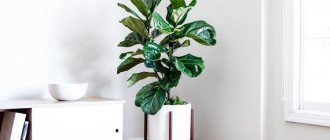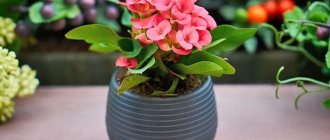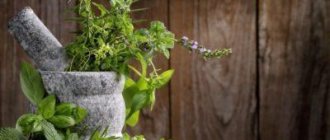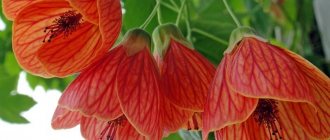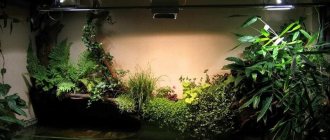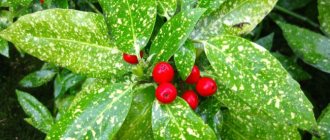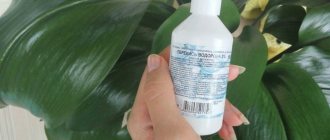Indoor moisture-loving plants: photos, names
Do you know how beneficial indoor plants are? The most comfortable air for humans contains at least 40% humidity - moisture-loving plants help to achieve such indicators. Compared to conventional ones, they evaporate much more moisture and do an excellent job of purifying the air.
In addition, natural cleansing moisturizers have excellent decorative properties.
In this article we will tell you about the most popular moisture-loving plants, photos of which are unlikely to leave you indifferent. We'll start with some tips for growing them.
Flowers for a bathroom without a window
It seems an incredible idea, but among indoor plants there are some that can really please owners in bathrooms that do not have windows. Among the most common:
- the same Decembrist,
- dieffenbachia,
- arrowroot,
- monstera,
- fern,
- ivy - the most common, with small foliage,
- fatsia,
- Usambara violets,
- ficus,
- chlorophytum,
- hoya,
- chrysanthemum,
- cyclamen, as well as plants of the aroid family.
Flowers purify the apartment and the air in it
Tall furniture will decorate additional places
The tiles will be able to retain the optimal amount of moisture in the bath atmosphere every day
Features of growing moisture-loving plants
The main and most important condition for maintaining such plants is to ensure high soil moisture. This can be achieved through regular watering and spraying. Another important point is the presence of a drainage system at the bottom of the flower pot. True, not all moisture-loving plants tolerate stagnation of water at the roots well. Fine expanded clay is most often used as drainage.
To maintain normal air humidity, a sufficiently large number of moisture-loving plants is necessary. When installing flower pots in the bathroom, you should take care of the source of ultraviolet light - it is advisable that there is a small window in the room. In addition, plants need protection from the ingress of detergents with an aggressive chemical environment. In the following sections, we invite you to find out which moisture-loving plants are best grown at home.
The benefits of moisture-loving flowers for humans
Excessive dry air is harmful to our respiratory organs. Everyone feels this for themselves. The normal level of air humidity in the room will be between 40 and 70%. In winter, dryness becomes critical. Trying to correct the situation, we buy expensive air humidifiers that do not decorate our interior at all. But there is a wonderful way to achieve comfortable humidity in a natural and beautiful way - by growing semi-aquatic or aquatic plants.
Houseplants growing in water have a romantic, fantastic appearance and lush greenery. Such an area with lush greenery, and even in combination with well-chosen photo wallpapers, will create a real tropical kingdom in the apartment. Any indoor flowers cleanse the atmosphere of the apartment and enrich it with oxygen. True, cacti and other succulents do this to a lesser extent. But tropical swamp plants have powerful photosynthetic activity. All physiological processes occur energetically in them, so they can supply us with oxygen and moisture to the maximum.
Recently, decorating the bathroom with living plants has become popular. Moisture-loving plants are ideal for this purpose. They will grow beautifully here. And while taking a shower or bath, you will feel as if you are on a tropical ocean coast.
Anthurium
One of the best examples of moisture-loving plants belonging to the Araceae family. Anthurium is native to the Amazon rainforest. The varieties Andre and Scherzer are considered the most suitable for growing indoors. The plant is considered quite capricious and requires the creation of certain conditions. Anthurium must be grown in good lighting and an air temperature of at least +18 °C. In addition, regular ventilation, spraying and abundant watering are important. The best option for moisturizing is placing the flower pot in a tray with wet peat.
Despite the whimsical care, many gardeners still prefer this plant. It's all about his stunning appearance. Anthurium flowers are quite inconspicuous in appearance; all the beauty lies in the bract. Judging by the photos of moisture-loving plants, it can be snow-white, red, pink, orange and even blue.
Moisture-loving herbs
Grasses in nature are accustomed to extreme conditions. These are moisture-loving and at the same time persistent plants. If you forget to water them, they will turn into a clump of hay sticking out of the pot. They react instantly to fresh water and send out fresh shoots. With abundant watering they turn green and even bloom.
Known species:
Calamus is a marsh grass and looks the same. Indispensable in indoor mini-gardens as a background for more spectacular moisture-loving plants. In long boxes it creates a grassy wall for decorating office partitions and window sills in entrances, because it is not afraid of drafts and cold.
Monstera
Another moisture-loving plant from the Araceae family. A large tropical liana came to us from the tropical forests of South America. In home growing conditions, the delicious monstera is most often used. This plant needs moist and warm air. In summer, the flower needs frequent and abundant watering, but in winter, the amount of water should be significantly reduced. In addition, it is necessary to constantly spray the plant and wash the leaves with warm water.
Monstera is an unpretentious plant; it can grow 5 meters in height. When growing it indoors, it can be quite difficult to achieve flowering. Greenhouse specimens delight with white flowers that look like a closed lily, and the edible fruits taste like a ripe banana.
Platycerium
The moisture-loving plant, whose name translates as “flat horn” or “deer horn,” has a rather exotic appearance. The appearance of its leaves really resembles deer antlers.
Platycerium needs constantly warm and humid air. It is best grown hanging on bark wrapped in moss. It is also possible to grow in ordinary flower pots, but you need to use an orchid substrate, which should be constantly moistened. Provide it with good protection from drafts and drying out. An important point in care is to be careful with the surface of the leaves - the small villi that provide access to moisture to the plant are very sensitive, so mechanical influences are contraindicated. It is strictly forbidden to wipe the leaves!
Begonia
One of the most common flowers, which is both moisture-loving and drought-resistant. The plant is loved by gardeners due to its long flowering period. Decorative deciduous and decorative flowering varieties of begonia are used for growing indoors. Some varieties are able to retain their original leaves throughout the year, but the most beautiful are tuberous begonias, which have luxurious flowers.
These plants are completely unpretentious in care and resistant to many diseases. It is advisable to place the flower pot in a well-lit place with diffused sunlight. Water the plant as the top layer of soil dries. To maintain optimal soil moisture, the flower pot can be placed in a tray with wet peat. On hot summer days, it is advisable to spray begonia with a spray bottle.
Cyperus
Sytov, or rosemary, as this plant is also called, belongs to the sedge family. Cyperus began to be grown indoors relatively recently - about 35 years ago. It is loved by many gardeners due to its unpretentiousness and high decorative qualities. The rather original appearance of the plant can decorate almost any interior.
Growing this moisture-loving plant involves using well-lit places with diffused sunlight. On particularly hot days, it is advisable to remove the flower pot from the windowsill to avoid burns. In winter, on the contrary, the plant should be provided with additional lighting using fluorescent lamps. Watering should be regular and plentiful, and during the period of active growth, the roots should be completely in water. In winter, excess water from the pan should be drained, and spraying should be reduced by at least half. From the beginning of spring to the end of autumn, every 2-3 weeks it is necessary to feed the plant with organic and mineral fertilizers, alternating them with each other.
Crassula, or money tree
Another plant that looks moisture-loving. Crassulas have fleshy leaves that appear juicy. They became popular as a plant that brings money into the house. Because of this sign, money amulets are hung on branches. This does not interfere with the plant, but it needs proper loving care. Otherwise, experts in household magic say, the money tree will begin to attract poverty instead of financial well-being.
This plant really needs water constantly. But after watering, the fat plant stores water in its leaves, which look like green pads. The flower does not tolerate tap water well. To water, the liquid must be left to sit for at least a day. This is not difficult, because the fat plant needs to be watered a couple of times a week, but generously.
The flower needs a good layer of drainage at the bottom of the pot. This way it will absorb just enough water to maintain balance. The plant sheds its leaves both when there is a lack of moisture and when there is an excess of it. If the fat woman suddenly loses weight and gets rid of shoots and leaves, it is being bothered by the heat of the radiator or the increased temperature in the room. For a plant in nature, this is a signal that drought is approaching.
Flowers that love moisture are suitable for beginning gardeners. Most other indoor plants require measured watering. They need more light than tropical and swamp watermen. And if you remove them from the windowsill, they can dry out. Unlike their moisture-loving green counterparts.
Dracaena
Dracaena gained its popularity due to its exotic appearance, reminiscent of a palm tree. This moisture-loving plant will serve as an excellent decoration for office premises, and it also perfectly purifies the air from the harmful effects of office equipment. Dracaena looks great both as a single plant and in composition with other flowers.
To grow dracaena, it is important to choose a well-lit place, but it is better to protect it from direct sunlight. In addition, it is important to ensure constant air humidity through regular spraying. When kept in dry air for a long time, the leaves begin to turn yellow and fall off. In particularly hot weather, wash the plant under a warm shower or wipe the leaves with a damp sponge. For irrigation, use rain or settled water, since tap water is too hard.
What plants are suitable for the bathroom?
Yes, yes... A plant quite familiar to all of us feels great in the bathroom even with low lighting. Among other things, it can always be used to treat scratches, insect bites, burns, and also to treat colds.
Aloe vera is an excellent choice even for novice gardeners, as it is very durable and difficult to kill.
Sansevieria, like aloe, is one of the most low-maintenance plants, making it an ideal choice for the bathroom. The plant does well in low light conditions. Moreover, Sansevieria filters out formaldehyde found in cleaning products, toilet paper, tissues and even some cosmetics.
This plant can grow in almost any light - even without soil! Simply place the bamboo root in a container filled with a few inches of pebbles. Then fill the container halfway with water and monitor the water level, adding periodically. Bamboo with curly stems looks great!
Dracaena comes in several varieties, but all of them suffer from a lack of moisture, which is manifested in brown, dry tips of the leaves. Is this a familiar picture? The natural humidity of the bathroom can be a great incentive to grow dracaena in the bathroom.
Flower growers know how picky these beauties are. But they feel great on the bathroom windowsill. Yes, exactly on the windowsill. An orchid will not survive in a bathroom without windows, since it needs, albeit indirectly, sunny color. If the bathroom windows face the sunny side, then it is recommended to place the orchids not on the windowsill, but near the mirror, so that the sunlight is first refracted and only then hits the plant.
Ferns' natural growing conditions are similar to what you might offer them in your bathroom—filtered low light and high humidity.
Place an unpretentious fern in the corner of your bathroom and enjoy!.
Spathiphyllum is a surprisingly unpretentious plant that perfectly cleanses the air of household impurities. The most acceptable growing conditions are minimal sunlight and high humidity. This is why spathiphyllum will feel great in the bathroom.
These leafy green plants can adapt to different light levels, but it is best to place the aspidistra away from a window if your bathroom has one.
You say, this is the plant of our grandmothers, it is no longer popular! Nothing like this! Chlorophytum is gaining popularity again due to the beauty of its leaves and ease of care. To maintain chlorophytum in order, you can cut off new shoots so that the plant does not lose its shape. Chlorophytum is one of the best plants for purifying the air from household chemical residues. And this is another reason to place it in the bathroom.
Livistona is a palm plant native to the tropical and subtropical rain forests of Southeast Asia and Northern Australia. It takes its name from the surname of Baron Liviston, who founded the Botanic Garden in Edinburgh in 1670. Livistona has fan-shaped leaves. The interestingly shaped leaves make the plant the most elegant of the miniature palms.
Tradescantia
Quite a popular moisture-loving indoor plant, which has about a hundred varieties. The main decoration of the lush plant are the amazingly beautiful leaves. During the flowering period, the bush is covered with small flowers, collected in neat inflorescences-bouquets.
The main condition for growing tradescantia is to provide rich lighting. With a lack of sunlight, the leaves become pale and weakened, variegated Tradescantia loses its decorative qualities - the bright stripes on the leaves disappear, they become monochromatic. However, prolonged exposure to direct sunlight leads to burns on the delicate leaves and stems of the plant, so light shading should be provided. Regular watering is important; under no circumstances should the soil be allowed to dry out.
To protect the root system, you should periodically loosen the soil. In addition, every month you need to fertilize at the time of watering. For these purposes, warm, settled water is used.
Floral Heritage
Moisture-loving houseplants can do without watering for a couple of weeks. They are accustomed to storing water in fleshy stems and leaves. If watering suddenly stops for a while, they act as in nature. The leaves shrink and fall off, giving up moisture to the stem and roots. When a loving gardener spares no water, plants grow quickly and abundantly.
The most common and familiar:
- Tradescantia.
- Ferns.
- Cyperus.
- Begonia.
- Unique moisture-loving chlorophytum
Beauty Tradescantia
The great-grandmothers did not know book words, so they gave the plant the apt name “Grandma’s Gossip.” Long stems with succulent leaves reach one and a half meters and hang beautifully from flower pots in the darkest corners. In the interior of the 60s, wall and floor metal stands for pots, painted to resemble a birch trunk, were popular. The stems of Tradescantia really resemble thin birch branches.
Tradescantia was brought to Europe in the 17th century from America. In its homeland it is a creeping undergrowth plant. There are moisture-loving species and those adapted to the conditions of mountain deserts. The plant in nature reproduces by rooting stems. That's why Tradescantia was so popular. It is enough to tear off the stem, put it in water, and after a couple of weeks the shoot with roots can be planted in a pot.
Many types of Tradescantia have been bred for growing indoors and for open ground. The leaves come in all shades of green or with stripes of white, yellow, and pink. Tradescantia does not require any care other than regular watering.
Features of ferns
Ferns survived all natural disasters and adapted to the climate of city apartments. Ferns of the genus Nephrolepis are common among gardeners. The most unpretentious Nephrolepis sublime, which anyone will immediately recognize as a fern.
Nephrolepis boston, cordate and others have an original leaf shape. They are “curly”, round or narrow. Because of the shape of the stems and leaves, florists like to decorate flower arrangements with ferns.
Ferns thrive with regular watering. If you take the time to spray, the fern will grow luxuriantly in a shaded area. Theoretically, it can reproduce by spores. Flower growers propagate ferns by dividing the rhizomes.
Cyperus, or swamp
In everyday life it is often called papyrus. Requires that there be an abundance of water in the pot, a real swamp. At a minimum, there should always be liquid in the pan. He is happy if he is planted in an aquarium with fish for beauty. Too dry air in the house is indicated by yellowed tips of the leaves. This means it’s time to spray it, recreating the climate of subtropical swamps.
Cyperus reproduces interestingly:
- All stems for vegetative propagation are placed in water with their leaves upside down.
- The cyperus shoot in the form of a miniature palm tree is turned upside down and the top is placed in water.
- The plant takes root and is transplanted into the ground.
Cyperus is sometimes called the cat palm. Some cats climb onto window sills, knocking pots over, to chew leaves. If there is an abundance of moisture, cat attacks are not scary; the plant grows so much that it needs to be pruned regularly. And cats are looking forward to their portion of cat palm.
Begonia for home
A plant for fans of home gardening. Requires regular, abundant, but dosed watering, diffused, but good lighting. The air around the plant should be humidified, but not sprayed on the leaves. With proper care, it pleases with abundant lush flowers and decorative leaves.
In addition to the traditional methods of propagation by cuttings or dividing the rhizome, begonia can be propagated by dividing the leaf:
- Pieces of leaf are stuck into the soil.
- Keep in a mini-greenhouse until mini-shoots appear at the base.
- Then they are transplanted into the soil.
So from one leaf you can get up to a dozen new plants.
Unique moisture-loving chlorophytum
Chlorophytum deserves special mention among moisture-loving indoor plants. It is credited with almost magical properties to purify the atmosphere in the house.
This is true. Of course, it purifies not karma and aura, but the air. It has a unique ability to capture formaldehyde, which is abundantly emitted by plastic electrical appliances and furniture made of fiberboard. Like any green creature, it greedily absorbs carbon dioxide.
To honestly clean the air, chlorophytum requires a lot of water. With regular watering, it will grow near computers and TVs, in the kitchen and even in the bathroom if there is a small window there. When the owners go on vacation, chlorophytum will wait for their return without watering. It will dry out the leaves and shoots to retain water in the roots. And it will grow again, like any grass, if you give it plenty of water.
Cyperus
Cyperus (lat. Cyperus) belongs to the sedge family. In nature, it grows near rivers or wetlands in tropical regions of Africa and Asia. In many sources this plant can be found under the name Syt. In indoor floriculture, it is still customary to call it by its Latin name, i.e. cyperus. The plant is very unpretentious. Tolerates irregular watering and lack of light. Continue reading →
- moisture-loving plants
- medicinal plants
- unpretentious plants
- north window plants
Possible problems
Indoor flowers are living organisms, and, like all living things, they can face various “health” problems. Here's what they are like:
- lack of lighting can result in pale and elongated stems.
- White mold appears on the surface of the soil. Overwatering or lack of drainage is to blame.
Advice! In this case, watering is temporarily stopped, and the green pet is sprayed with some antifungal drug, perhaps a slightly pink solution of potassium permanganate.
- The appearance of a flour-like coating indicates the appearance of powdery mildew, which is caused by prolonged waterlogging of the air and soil.
- If soap or any cleaning products come into contact with the leaves, whitish or brownish spots may appear on the leaves.
- If the stems and leaves have darkened and drooped, and the soil is wet, this is a signal: the roots may rot due to waterlogging.
Flowers for a bathroom, whether it is without windows or with windows, placed here for decoration, of course, require attention and add trouble. But plants that are suitable for the bathroom make the interior of the room warmer and more comfortable, and the air is cleaner and more fragrant.
Allamanda
Allamanda (lat. Allamanda) belongs to the Kutrovye family. Natural habitats are the countries of South America. It blooms in the summer season with large and bright flowers. Growth form: liana-like shrub. Therefore, the shoots will need support in the form of a trellis. In order for the flower to be decorative, it must be pruned annually. This will enhance branching and, accordingly, flowering. Continue reading →
- moisture-loving plants
- vines
- sunny window plants
- Kutrovaceae family
- demanding plants
- poisonous houseplants
Why doesn't the orchid bloom?
Why doesn't the orchid bloom? As always in floriculture there is no easy answer. Each lover of indoor plants subjectively evaluates his conditions. It is possible that your orchid, which is “feeling great” and is also splendidly growing new leaves, is in fact unable to form a flower arrow. In addition, orchids began to be grown en masse in our Continue reading →
- moisture-loving plants
- dendrobium care
- orchids
- phalaenopsis care
Hydrangea
Hydrangea (lat. Hydrangea) belongs to the Hydrangeaceae family. Naturally grows in East Asia and South America. Sometimes the name Hydrangea is used based on the Latin form (Hydrangea). Hydrangeas gained popularity back in the 19th century. Among the English aristocracy, it was very fashionable to have bushes strewn with unforgettable cap inflorescences. Hydrangea is native to subtropical regions. Therefore, she easily tolerates soft European Continue reading →
- moisture-loving plants
- moderately demanding
"Moisture-loving and drought-resistant indoor plants." GCD with children of senior preschool age
Angelica Rud
"Moisture-loving and drought-resistant indoor plants." GCD with children of senior preschool age
Goal: to develop children’s ideas about the differentiated moisture needs of indoor plants .
1. Teach children to consider the features of the external structure of plants and, on this basis, classify them as drought-resistant or moisture-loving .
2. Expand knowledge about indoor plants .
3. Foster a love of nature.
Preliminary work: conversation about indoor plants ; reading poems and riddles about plants .
Priority educational area: Speech development
Educator: Guys, guess the riddle:
Leaf with a hump, groove,
It has thorns, but does not know how to hurt,
But he treats us at any hour.
Educator: That's right, this is aloe, guys, and what kind of plant ?
Children: This is an indoor plant
Educator: That's right, why is it called a houseplant ?
Children: Because it grows indoors
Educator: That's right, because it grows indoors . What conditions do all plants to grow well?

